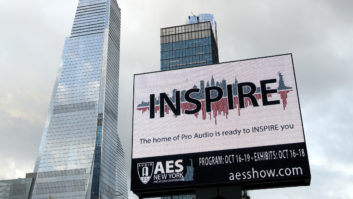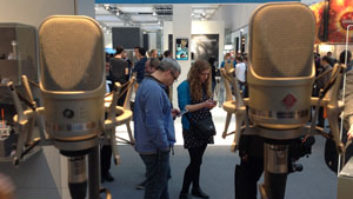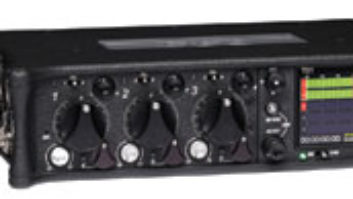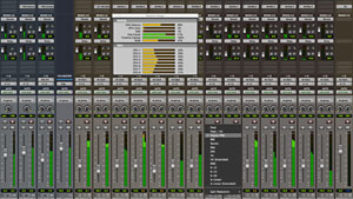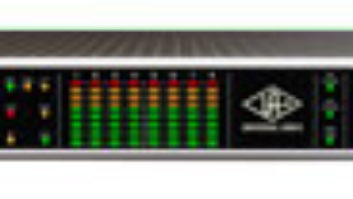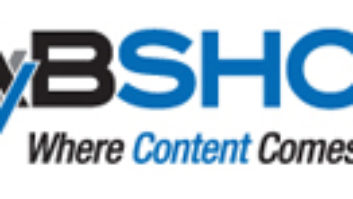The annual Musikmesse/ProLight+Sound show, held in Frankfurt, Germany, from March 13 through 17, 2002, is nothing short of gargantuan, filling more than a dozen halls with the latest in musical instruments and audio gear. Given its size, Musikmesse offers a little bit of everything, from an entire exhibition hall of accordions, to some very AES-looking halls devoted to high-end audio from distinctly non-M.I. suppliers, such as Meyer Sound Labs, Trident Audio, Neumann, Nexo, DPA, Apogee Sound, Midas, Nagra, Funktion-One, Turbosound, etc.
Taking place just a few weeks after this winter’s highly successful NAMM show, there was some concern whether this year’s Musikmesse would offer much in the way of new products. However, this concern proved to be unfounded, as the Frankfurt show had no shortage of hot debuts — both pro and M.I. Here are a few highlights…
PRO CONSOLES
The most talked-about product at Musikmesse was Yamaha’s 02R96, the long-awaited successor to its revolutionary 02R digital console (see spotlight on page 60).
Not all consoles were digital. SPL (www.soundperformancelab.de) unveiled its MMC1, a no-compromise, fully discrete analog console for stereo/5.1/6.1/7.1 mastering. Designed with DVD-A and SACD specs in mind, and priced around 64k euros (approx. $55,000 U.S.), the MMC1 is centered around two large, backlit, multichannel potentiometers for adjusting playback monitor and master output levels. A logic-controlled patchbay (with four memories) handles various routings/sequences of multichannel outboard gear for insertion into the master outputs, allowing the engineer to compare different combinations/orders of processing (compression, EQ, harmonic enhancement, etc.) instantly. All switching uses gas-filled relays, and active processing is via SPL’s Supra discrete 120-volt(!) opamps with 150dB dynamic range and 34 dB of headroom. Eight large VU input meters and an RTW 10800 visual surround monitor (offering correlation, phase, surround analysis, vectorscope, RTA and 8-channel peak output metering) are standard.
SOFTWARE
The biggest news in softwareland had to be Steinberg’s debut of Cubase SX. Although it’s called Cubase, Cubase SX is an entirely new program with a powerful new software engine, which is based on Nuendo technology but geared toward music creation and production. Cubase SX features intelligent MIDI Input and processing tools, new virtual instruments and effects, graphic automation of every parameter, scoring, 5.1 mixing and unlimited undo/redo, all within a new graphic interface. It integrates VST System Link for combining computers for additional processing power. Cubase SX will support Windows 2000/XP and Mac OSX; a variety of upgrades from Cubase VST are available. A bonus: Cubase VST users who upgrade to Cubase SX can use VST System Link to create a network with both applications.
We got a sneak preview of SONAR 2.0, the latest version of Cakewalk’s (www.cakewalk.com) multitrack recording/editing software introduced last year. This upgrade features the Cyclone DXi Groove Sampler, a software synth that lets users manipulate and combine individual slices of Groove Clips and ACID loops. Cyclone DXi can also extract and re-map loop rhythms, and trigger up to 16 groove pads in real time with a MIDI input device, keyboard or mouse. SONAR 2.0 also offers ReWire 2.0 support, 64-bit DirectX 8 audio-mastering effects, a multiport graphical drum editor, a new Synth Rack for more flexible integration of DXi software synths, global MIDI control surface support and support for Yamaha Open MIDI Plug-in Technology (see below).
In addition to announcing that it’s now distributing Samplitude, Emagic (www.emagic.de) showed Phat Channel, an extension unit for the Logic Control system that offers 32 additional V-Pots, providing direct access to parameters of a track, an audio instrument or Logic Platinum plug-ins. One cool Phat Channel feature is Split mode, which allows different editing functions to be spread across different displays and V-Pots, ideal for plug-in or instrument editing.
Propellerhead Software (www.propellerheads.de) showed Reason 2.0. One of the coolest new features in the addition of the Malström Graintable Synthesizer, which combines granular synthesis with wavetable synthesis, and offers a variety of filters and two modulators/LFOs. Also new in Reason 2.0, the NN-XT Advanced Sampler, with automatic pitch detection and mapping of samples; enhanced sequencer features including Zoom, Line and Eraser tools (and the ability to break away and resize the sequencer); The Orkester NN-XT Sound Library, featuring orchestral samples ranging from single woodwinds to complete string sections; and, of course, support for Windows XP and Mac OS X (including Core Audio, Aqua GUI and any MIDI interfaces recognized by Mac OS X).
Yamaha caused a stir with the debut of its Open Plug-In Technology (OPT) for the control of MIDI devices from within music software and sequencing products; it’s designed to provide seamless integration of hardware control surfaces, synth editors and other MIDI tools via GUI-based editors for the devices. The format is based upon the Microsoft COM (Component Object Model) interface for compatibility with Microsoft Windows 9.x/ME/2000 and XP. A royalty-free SDK is available; Cakewalk and Sonic Foundry are some of the first partners. Visit www.yamahasynth.com for more details.
SIGNAL PROCESSING
More and more plug-ins are being developed for TC Works’ (www.tcworks.de) PowerCore. DSound’s V12 Multichannel Valve Interface plug-in offers the warmth of classic tube interfaces in a simple-to-use software emulation. Up to eight channels are available, with a master saturation control. 24/96 is supported.
Three years ago at Frankfurt, Korg (www.korg.com) blew us away with its Kaoss Pad Dynamic Effect/Controller. Now Korg has taken the concept of this brilliant XY-axis pad/signal processor one step further: The new KP-2 Kaoss Pad greatly expands the palette of built-in effects and adds an onboard sampling function (up to six seconds at 44.1 kHz for each of the two sample keys).
Highly regarded for its excellent signal processing, TC Electronic (www.tcelectronic.com) unveiled the M300 Dual Engine Processor, a digital reverb/multi-effects unit that retails at an amazing $299 and includes 99 user presets and 256 factory settings.
INSTRUMENTS
Noah, from CreamWare (www.creamware.com), generated a buzz on the show floor. The software-controlled hardware synth offers analog (subtractive), FM, vector and wavetable synthesis, plus new physical modeling technology for guitar and bass sounds. And if that’s not enough synthesis to keep you up all night, there’s an option for sampling and PCM, plus Noah features plug-in technology for even more instruments, and offers extensive editing and effects. The basic package comes with nine instruments, including Minimoog and B3 emulators. Noah is available in both rackmount and keyboard versions.
On the heels of the Winter NAMM release of its Grand Piano VST instrument, Steinberg (www.steinberg.net) introduced the Virtual Guitarist from Wizoo. Playable via MIDI, the Virtual Guitarist is actually two instruments, acoustic and electric. Included are 20 virtual players offering different popular guitar sounds, styles and phrasing. There’s even intelligent fret noise.
VirSyn (www.virsyn.de) showed TERA, a software-based integrated synth workstation with 16 modular synths, sequencing and a mixing console with an effects rack containing up to 48 individual effects. TERA’s multisynthesis engine offers analog synthesis, physical modeling, FM synthesis and VirSyn’s “spectral synthesis,” which allows users to create dynamic resonant structures containing 128 resonance filters. TERA works as a standalone app or as a VST plug-in.
Emagic’s (www.emagic.de) Vintage B3 is a software instrument for Logic 5 that models — you guessed it — the legendary Hammond. The EVB3 is laid out like the original, but offers an extra octave above and one below the five octaves of the original. The detailed simulation of the original electromechanical tone generation includes key click and speaker simulations. Effects include vibrato, tremolo and wah; a Leslie effect plug-in is also available. Emagic also showed the EVD6, a virtual Clavinet that recreates the sound of the original Hohner D6.
Of course, if you wanted a real Hammond, you’d have to cram into the packed Hammond (www.hammondsuzuki.com) booth, where attendees checked out the “New B3,” a re-creation of the classic B3 organ. Identical in dimensions to the original (but mercifully, half the weight!), the New B3 offers the familiar dual manuals, reverse keys, drawbars and pedals, but features digital tonewheel generation, MIDI out, Flash card memory and controls for key click, treble/bass, overdrive and reverb. Deliveries begin late this year.
STUDIO ESSENTIALS
You never have enough mics, and Musikmesse brought in a fresh new crop. Shipping now, the AT-4040 from Audio-Technica (www.audiotechnica.com) is an affordable ($495 list), true condenser that puts a large-diaphragm cardioid element into a 4033-sized housing. Switches for low-cut filtering and -10dB pad (155dB max SPL with pad in) complete the package. Tubemeister Dirk Brauner (www.dirk-brauner.com) unveiled Phantom, his first solid-state mic, built into the same body size as his tube Valvet model. This large-diaphragm cardioid condenser has a squeaky-clean self-noise of 8 dBA. Phantom pricing was not set at press time (probably around $1,100 — with flight case and shockmount). Russian mic builders Oktava (www.oktava.org) debuted the ML52, a figure-8 ribbon model in an elegant birdcage-style body. Retail is $799.
Danish Pro Audio (www.dpamicrophones.com) kicked off its tenth anniversary with the launch of the 4041-SP, a large-diaphragm/low-noise (typically 8 dBA) omni designed to operate at standard 48 VDC phantom power. The 4041 is now available in three versions, as its removable capsule can attach to other bodies, offering optional 130V tube, or 48 and 130V powered, solid-state preamps. Neumann (www.neumann.com) teamed up with Sennheiser (www.sennheiser.com) to create a new wireless system using the KK 105S capsule (based on Neumann’s KMS 105/140/150 handheld vocal mics) and Sennheiser’s SKM 5000 transmitter.
Quested (www.quested.com) unveiled the F5, a powered near-field reference monitor in a hip two-tone cabinet. Designed to provide the characteristic sound of Quested’s higher end designs, the sealed F5 cabinets house 80 watts of onboard biamplification driving a magnetically shielded 5-inch woofer and 0.8-inch soft dome tweeter, with front panel power, volume and LF/HF cut and boost controls. Quested also showed two 180-watt powered subs with a 10-inch long-throw woofer. The F19 is intended for adding bass to existing full-range stereo monitors. Designed for surround, the F19.1 provides LCR I/Os, a dedicated LFE input with gain control and several low- pass filter settings, phase adjustment and sub out/direct input for using multiple cabinets in 6.1 or 7.1 applications.
LIVE SOUND
Distributed in the U.S. by ATI (www.audiotoys.com), Audient’s Aztec Live Console features a modular architecture and 32, 40 or 48 input channels. Features include 12 VCA sub groups, eight audio subgroups, VCA solo, a 12×8 matrix, eight mono and two stereo aux buses, and LCR outputs. A stereo ambience input facilitates in-ear monitoring, and scene automation is standard. The board’s innovative exterior frame design protects the mixer, while providing numerous handgrip positions for loading the console through narrow doorways or into tight installation spaces. Aztec is already in use on the Groove Armada tour in the UK.
Martin Audio’s (www.martin-audio.com) Wavefront W8L uses horn-loading techniques in a line array format to produce an extremely powerful system, providing max continuous SPLs in the 134dB range. This three-way, full-range box — also useable without subs in many applications — combines proven driver-loading techniques, vertically coupled waveguides, and true constant directivity horns for high efficiency and coverage consistency. Inside is a horn-loaded/ported 15-inch woofer, and vertically coupled constant directivity horns loaded with two 8-inch cone mid drivers and three 1-inch HF compression drivers.
Debuting at Winter NAMM, JBL’s (www.jblpro.com) SoundFactor line brought JBL performance to new levels of affordability. Now JBL rounds out the series with the SoundFactor SF22SP powered sub, featuring dual 12-inch woofers in a bandpass enclosure and an onboard 500-watt peak (300W continuous) power amp. The 32×18×35-inch SF22SP cabinet weighs 126 pounds; removable 3-inch casters simplify load in/out.
MORE TO COME
There were plenty of other interesting debuts at Frankfurt Musikmesse, and we’ll include some of these in our regular new product sections in the months to come. Meanwhile, it’s not too early to start planning for next year’s show, to be held March 5 to 9, 2003. For more information, visit www.musikmesse.com.

